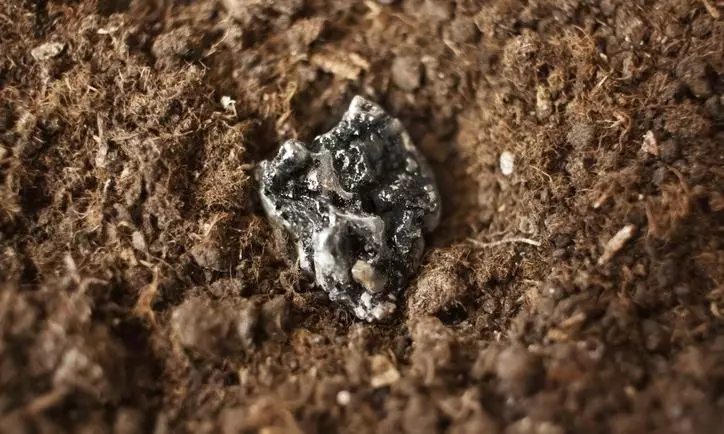
- Home
- India
- World
- Premium
- THE FEDERAL SPECIAL
- Analysis
- States
- Perspective
- Videos
- Sports
- Education
- Entertainment
- Elections
- Features
- Health
- Business
- Series
- In memoriam: Sheikh Mujibur Rahman
- Bishnoi's Men
- NEET TANGLE
- Economy Series
- Earth Day
- Kashmir’s Frozen Turbulence
- India@75
- The legend of Ramjanmabhoomi
- Liberalisation@30
- How to tame a dragon
- Celebrating biodiversity
- Farm Matters
- 50 days of solitude
- Bringing Migrants Home
- Budget 2020
- Jharkhand Votes
- The Federal Investigates
- The Federal Impact
- Vanishing Sand
- Gandhi @ 150
- Andhra Today
- Field report
- Operation Gulmarg
- Pandemic @1 Mn in India
- The Federal Year-End
- The Zero Year
- Science
- Brand studio
- Newsletter
- Elections 2024
- Events
- Home
- IndiaIndia
- World
- Analysis
- StatesStates
- PerspectivePerspective
- VideosVideos
- Sports
- Education
- Entertainment
- ElectionsElections
- Features
- Health
- BusinessBusiness
- Premium
- Loading...
Premium - Events

Rare-earth minerals could fuel the next round of global geo-economical contest involving major powers such as the US and China. Representative Photo: iStock
With Beijing controlling the global rare-earth supply chain, India’s new mission aims to reclaim lost ground. US, too, is caught napping
It is widely believed that Deng Xiaoping, China’s most influential leader from 1978 till his death in 1997, said that while the Middle East had oil, China had rare earths. The year was 1992. He was a great visionary who changed the system established by the leader of the Chinese Revolution, Mao Zedong.
Deng laid the foundations of present-day China, which is giving stiff competition to the United States for the leadership of the world. If his comment on rare earths is true, then it demonstrates that he had a remarkable insight into how significant rare earths and critical minerals would become in the future.
China owns largest rare-earth deposits
China has the world’s largest deposits of rare earths — currently estimated at 44 million tons. (The second largest holder of rare earths is Brazil with 21 million tonne, followed by India at around 6.9 million tonne). Unlike other countries, China relentlessly mined rare earths, refined them, and used the refined product to produce magnets and other items.
Also read: Myanmar ground reality hits India’s plans to tap rare earth minerals
The Asian giant mines 60 per cent of the world’s rare earths currently. More importantly, it refines 91 per cent of the globally mined rare earths and produces 94 per cent of rare-earth magnets.
A recent paper on the website of the International Energy Agency (IEA) noted, “Two decades ago, China accounted for around 50 per cent of the production of sintered permanent magnets commonly used in cars, wind turbines, industrial motors, data centres and defence systems. This share has risen significantly to 94 per cent today, making China the world’s single-largest supplier of the component critical to the manufacturing of the most powerful motors that are used for many cutting-edge applications”.
US ruing decision?
On the other hand, in the past three decades, the US abandoned refining of rare earths because it was polluting the environment. Today, it would be ruing its decision. Indeed, along with many countries, it remained complacent on the rare-earth products till China began to control its exports beginning April this year.
Also read: India, Russia discuss collab in rare earth, critical minerals extraction despite US tariffs
The IEA report states that “the Chinese government introduced export controls on seven heavy rare-earth elements, as well as all related compounds, metals and magnets. As export volumes fell sharply in April and May, many carmakers in the United States, Europe, and elsewhere struggled to obtain permanent magnets, with some forced to cut utilisation rates or even temporarily shut down factories”.
It is well known that Indian manufacturers of electric vehicles were also impacted by China's control of the export of rare-earth magnets.
As its trade difficulties with Washington increased, Beijing once again imposed greater controls on rare-earth products' exports about a fortnight ago. It is best, once again, to turn to the IEA on how it views the impact of these new controls on worldwide industry in many areas.
Also read: Why do rare earth elements matter? Why does China have a hold on these?
Readers may forgive me for giving a long quote, but I do so because it is authoritative and impacts India too. The IEA on its website states, "The new controls require foreign companies to obtain a license from China to export “parts, components and assemblies” containing Chinese-sourced rare-earth materials or produced using Chinese rare-earth technologies".
The rule was applied with immediate effect to products made in China. However, from December 1, 2025, the controls will be escalated to include "internationally made" products containing Chinese-sourced materials or manufactured using Chinese technologies, even if they are traded domestically.
The inclusion of “parts, components and assemblies”, beyond the previous isolated controls on select rare-earth magnets and materials, could have a dramatic impact on global supply chains, as many strategic sectors rely on products and components containing the controlled Chinese rare-earth elements. These sectors include energy, automotive, defence, semiconductors, aerospace, industrial motors and AI data centres.
US reaction to China's control
The US response to Chinese controls of critical materials and rare earths has been sharp.
Also read: A home on the Moon? Lunar colonisation is the next big earthling goal
President Donald Trump called it “shocking” though he should not be shocked because the trade war against China and the rest of the world was launched by him.
He has used tariffs as a weapon. While many countries have tried to assuage him because of their dependence on the US market and technologies China has retaliated against. These restrictions on rare earths are part of its retaliation. Trump has threatened to increase tariffs by 100 per cent on China if it does not lift its curbs on rare earths.
At the same time, the US is energetically entering into arrangements with countries such as Australia which possess critical minerals. As part of this process, the US has also encouraged its company, US Strategic Metals, to enter into a relationship with the Pakistani Army-owned company, Pakistan Frontier Works.
Also read: Has India’s foreign policy hit a diplomatic wall?
It will be recalled that Pakistani Field Marshal Asim Munir had carried a box of critical minerals of Baluchistan during one of his recent visits to the US to show Trump its potential.
It will take a decade for US to match China
The problem is that it will take, according to some analysts, almost 10 years before the US can really catch up —if at all — with China in this field. This is the time it takes to develop mines and refining and product-making facilities. Hence, China’s choke on critical materials and rare earths on the world is going to continue for many years. That will impact the production of battery as well.
Also read: Trump tariff: Domestic market on edge but no disruption just yet
The US is also trying to build a multilateral response to China’s export controls on rare earths. US Treasury Secretary Scott Bessent spoke of “working with” the European Union, Australia, Canada and India as well as other Asian democracies against the Chinese move. The issue here again is that the US cannot take a position that it would want to cooperate with these countries against China but at the same time use tariffs as weapon against them.
India's critical mineral mission
The Indian government launched a National Critical Mineral Mission this year to secure the country's "critical mineral supply chain by ensuring mineral availability from domestic and foreign source and strengthening the value chains by enhancing technological, regulatory, and financial ecosystems to foster innovation, skill development, and global competitiveness in mineral exploration, mining, beneficiation, processing, and recycling”.
The Geological Survey of India has been ordered to explore 1,200 sites from now till March 2031. This is an ambitious target, but it must be accomplished if India wishes to become a key player in the coming industrial age.
Along with mining, refining and product-making capability have to be created using rare earths and critical minerals. It is good that this mission has been launched but it should have been done at least 15 years ago.
India and the world face a stiff challenge from China in this area.
But one area which the rare-earth issue highlights is the importance of visionary leadership, like Deng Xiaoping in the case of China. It was forward-looking and not focused on the glories of China’s ancient civilisation.
(The Federal seeks to present views and opinions from all sides of the spectrum. The information, ideas or opinions in the articles are of the authors and do not necessarily reflect the views of The Federal.)


